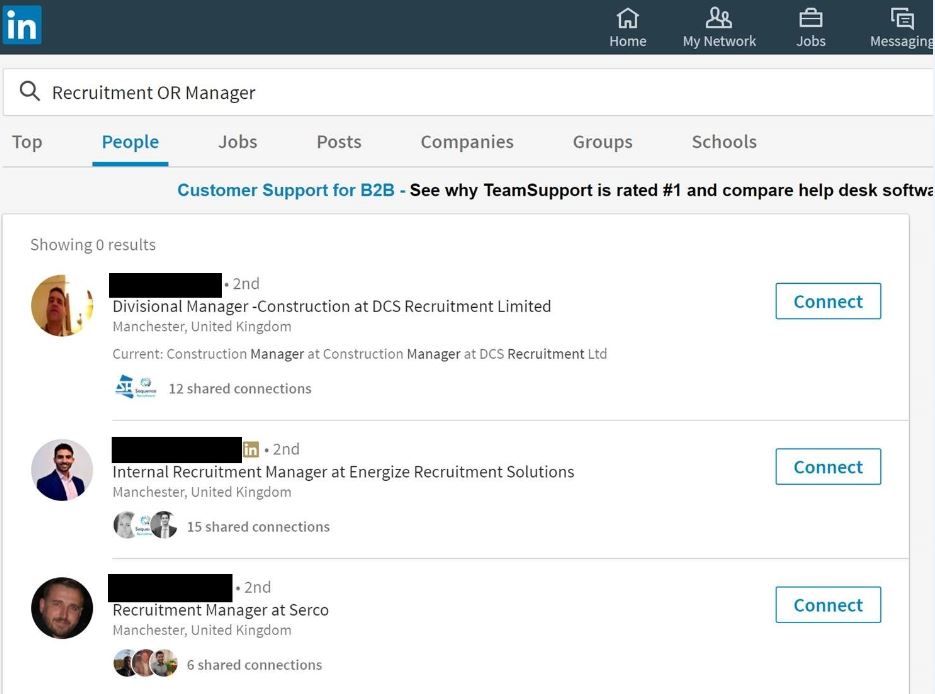


You can perform a Boolean search on LinkedIn by combining keywords with operators such as AND, NOT and OR.
Example: site: ("hair stylist") ("New York") How to Use Linkedin Xray Search Boolean operators on LinkedInīoolean search strings work in the keyword field of Recruiter and, and in the company, title and keyword fields of Sales Navigator. 👉 By adding the attribute we can identify email addresses directly. site: inurl:/in/ Chief marketing officer You can search for a person by job title: Get specific information about a person.This is where another type of operator comes into play, inurl:, which we’ll combine with the operators listed above. It’s hard to automate this one because we don't know exactly what we're getting, companies or people.

Let’s start with the basic search operator: Great for lead generation and data enrichment because you can retrieve tons of information about competitors, prospects, and potential recruits. apple source:the_verge Using Google Xray Search for LinkedIn pages
source: finds news results from a certain source in Google News. The words "apple" and "iphone" must be present in the content and not separated by more than four words. Finds pages containing two words or phrases within X words of each other. allintext: Similar to "intext", but only results containing all specified words somewhere in the page will be returned. intext: finds pages containing a certain word (or words) somewhere in the content.ĭisplays all results containing the word "apple" in the content of the page. allinurl: similar to "inurl", but only results containing all the words specified in the URL will be displayed. inurl: searches for pages containing one or more specific words in the URL.ĭisplays all results containing the word "apple" in the URL. But this operator is very useful when combined with others. Of course, this doesn't really make a difference to ordinary searches, as Google uses "AND" by default. AND : to only get results related to X and Y. Note that the pipe symbol (|) can also be used instead of "OR". OR : if you’re searching for X or Y, use OR to get results related to X, Y, or both. This narrows down the results of an ambiguous search and excludes synonyms. "Search term": to find the exact match. Here are these basic Boolean operators to get you started: How to Use Google Xray Search Google syntax for advanced searches So if you’re just starting out, you might want to look at an easy, no-code tool like Captain Data to do the job for you. However, these platforms aren’t that easy to scrape automatically. 💡In this article, we’re presenting techniques that are specific to Google and LinkedIn. The entire process can be automated to find and enrich data on a large scale. You can use this tool to find lead information such as emails, phone numbers, social profiles, and more.Īnd once you've found the right query, no need to type it into Google 50 times. site: inurl:/in firstname lastnameĪnd that's the power of Xray Search - using the right combination of search terms to get a 99% accurate result. Spoiler alert: the search string look more or less like this: Enter the right search string and you’re almost certain to find the corresponding profiles. Say you want to find the LinkedIn profile of a group of webinar attendees. Used correctly, you can reach a level of detail where you know you’ll get the right result 90, 95, or even 99% of the time. Xray Search 2.0īut that’s only the tip of the iceberg, you can go even further with Xray Search. Whether you’re on Amazon, Twitter, Indeed, or Instagram, advanced search operators will help you uncover more relevant results. In fact, the principle of X-Ray Search can be applied to all types of search engines.







 0 kommentar(er)
0 kommentar(er)
